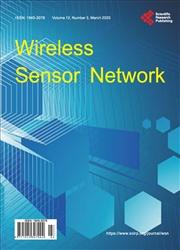Efficient Approach for Monitoring and Controlling Water Parameters Utilizing Integrated Treatment Based on WSNs
引用次数: 3
Abstract
Research works of Wireless Sensor Networks (WSNs) applications and its constraints solutions occupy wide area around the world and attract many researchers. In this paper, an important one of environmental WSN applications is presented that is the water monitoring applications. An efficient approach for monitoring and controlling water parameters in real-time is implemented utilizing merging between WSN and designed simple workstation. For implementation simplicity, two water parameters (pH and temperature) are monitored and controlled in the proposed approach. Most of past work of water monitoring presented different proposed monitoring scenarios for different water parameters only. This research work utilizes the concept of interactive WSN nodes. The interactive nodes interact with the monitored water parameters to control its value. In the base station, the collected data is analyzed and the real-time value of the monitored parameters appears on the designed Graphic User Interface (GUI). The GUI is designed using the Matlab program. Through the GUI, the operator can switch the control between automatic and manual. ZigBee module is used for implementing the wireless communications between the nodes and the workstation. Due to the cost and simplicity, two sensors only are used in the proposed approach. Different real-time experiments are performed to test and measure the effectiveness and performance of the presented approach. These experiments reveal that the presented approach is effective for water treatment and efficient more than the past proposed water monitoring scenarios.基于无线传感器网络的综合处理水质参数监测与控制的有效方法
无线传感器网络(WSN)应用及其约束解决方案的研究工作在世界范围内占据了广泛的领域,吸引了许多研究人员。本文介绍了WSN在环境监测中的一个重要应用,即水监测应用。利用WSN与设计的简易工作站的结合,实现了一种实时监测和控制水质参数的有效方法。为了简化实施,在所提出的方法中监测和控制了两个水参数(pH和温度)。过去的大多数水监测工作仅针对不同的水参数提出了不同的监测方案。本研究工作利用了交互式WSN节点的概念。交互式节点与监测到的水参数交互以控制其值。在基站中,对收集的数据进行分析,并在设计的图形用户界面(GUI)上显示监测参数的实时值。GUI是使用Matlab程序设计的。通过GUI,操作员可以在自动和手动之间切换控制。ZigBee模块用于实现节点与工作站之间的无线通信。由于成本和简单性,在所提出的方法中仅使用两个传感器。进行了不同的实时实验来测试和测量所提出方法的有效性和性能。这些实验表明,所提出的方法对水处理是有效的,并且比过去提出的水监测方案更有效。
本文章由计算机程序翻译,如有差异,请以英文原文为准。
求助全文
约1分钟内获得全文
求助全文

 求助内容:
求助内容: 应助结果提醒方式:
应助结果提醒方式:


